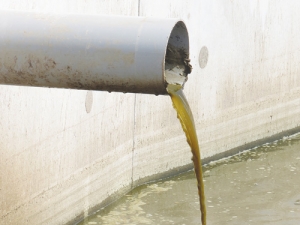Can farms make money – or at least save it – by extracting the energy latent in dairy effluent?
The question has lurked in the background of the dairy industry's growing use of supplementary feed for ten years, DairyNZ observes.
In-shed feeding, feedpads and covered housing have boomed, and with them the need to collect and store ever more dairy effluent. The liquids and solids then have to be irrigated, when soil conditions allow.
Predictably questions arise about the practicality and economics of farms extracting energy from stored effluent. Dairy farms now spend about $490 million/year on energy – $250 million on electricity.
Biogas – energy from waste – is gas produced during the breakdown of biological organic matter into carbon dioxide and methane, usable to generate electricity and heat, and to power vehicles.
Biogas can be produced from effluent from farms, crops, crop wastes, fats and oils and sewage or at landfills. Biogas contains methane (a greenhouse gas), which is the combustible portion of biogas. The most common way of producing biogas is an anaerobic (without air) digestion system.
In the case of dairy effluent this would be either a covered effluent pond/tank or an enclosed anaerobic digester. Biogas also contains hydrogen sulphide, carbon dioxide and water vapour.
The hydrogen sulphide and water vapour need to be removed for electricity generation to succeed. If the biogas is to be used solely for heating, then the gas can be used much as it is produced except for the excess water vapour which should be removed.
What are the drivers for biogas use? Biogas production from agricultural wastes attracted a lot of interest in the 1970s and 80s because of the cost and supply of crude oil from the Middle East.
During that period, biogas was captured from a variety of waste streams for energy and many vehicles were powered by CNG (compressed natural gas) – now out of favour.
With climate change a global concern and growing demand for emissions reduction, interest in using renewable energy is also rising.
New Zealand has the third-highest renewable energy supply in the OECD; 38% of consumer energy need is met by renewable energy, notably geothermal, hydro, biomass and wind.
At least 75% of NZ's electricity is from renewable resources. Interest has not waned in farm greenhouse gas emissions; farmers and other businesses continue talking about capturing biogas.
Biodigesters are widely used in the US, UK and Europe on dairy farms. But these countries use subsidies, tariffs and means to present such systems as economic. (These can be seen as a 'tax'.)
On its own, biogas may be difficult to justify economically by an average NZ dairy farm. But a farmer could capture methane and convert the energy to economic use to:
- Offset electricity costs on farm
- Provide an energy source in a region with 'old' power infrastructure that may struggle.
Summary
- Extracting energy from dairy effluent doesn't deal with the whole problem, but it can add value.
- Selling electricity to the NZ grid is unlikely to be cost effective due to the way the energy sector operates and the small amount of energy likely to be produced by an average dairy farm. Thousands of cows would be needed for a farm to gain a good price. Best to plan to use the electricity generated to power onfarm activities.
- Biogas collection and conversion to heat, fuel or electricity is a specialist area, so experience and expertise are essential.
- Flammable methane demands that all safety regulations be met, and installation onfarm must follow health and safety rules.


















